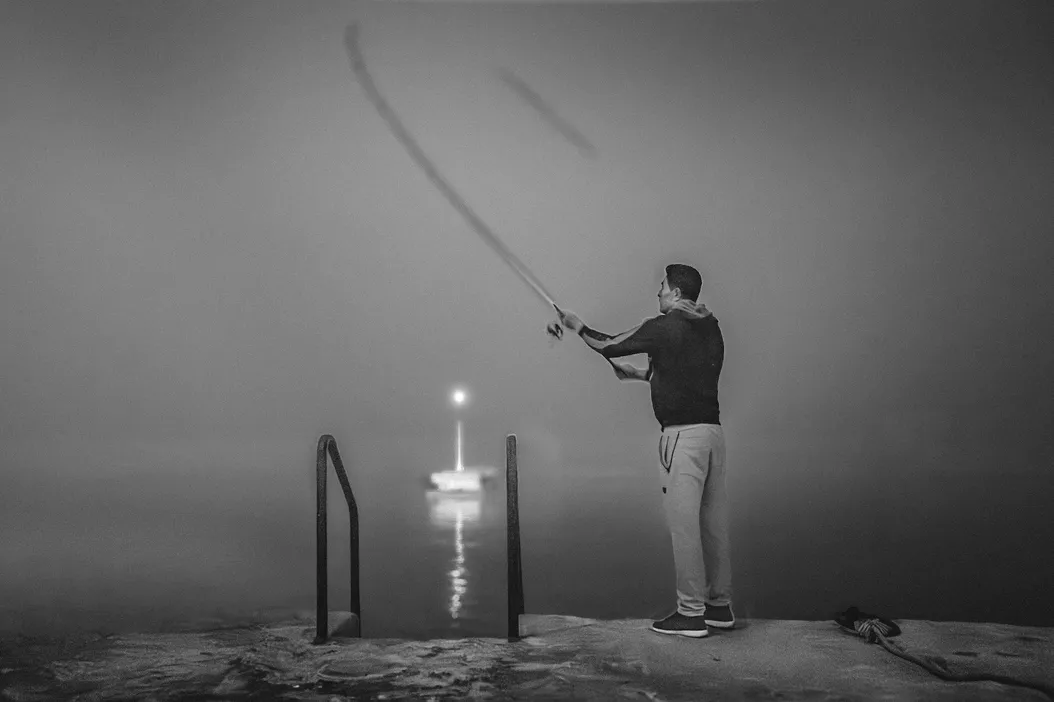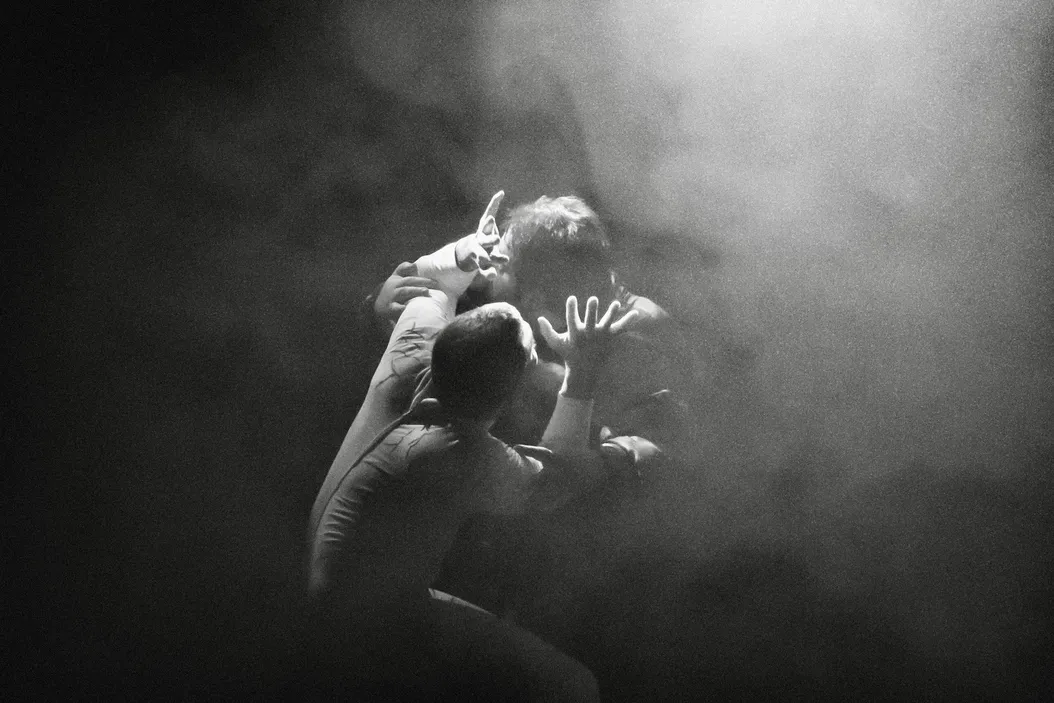There was a massage tent at the sprawling Syntagma Square occupation in the spring of 2011. Inside, I found protesters sitting on deckchairs getting free back rubs, shiatsu, Thai chops, the works.
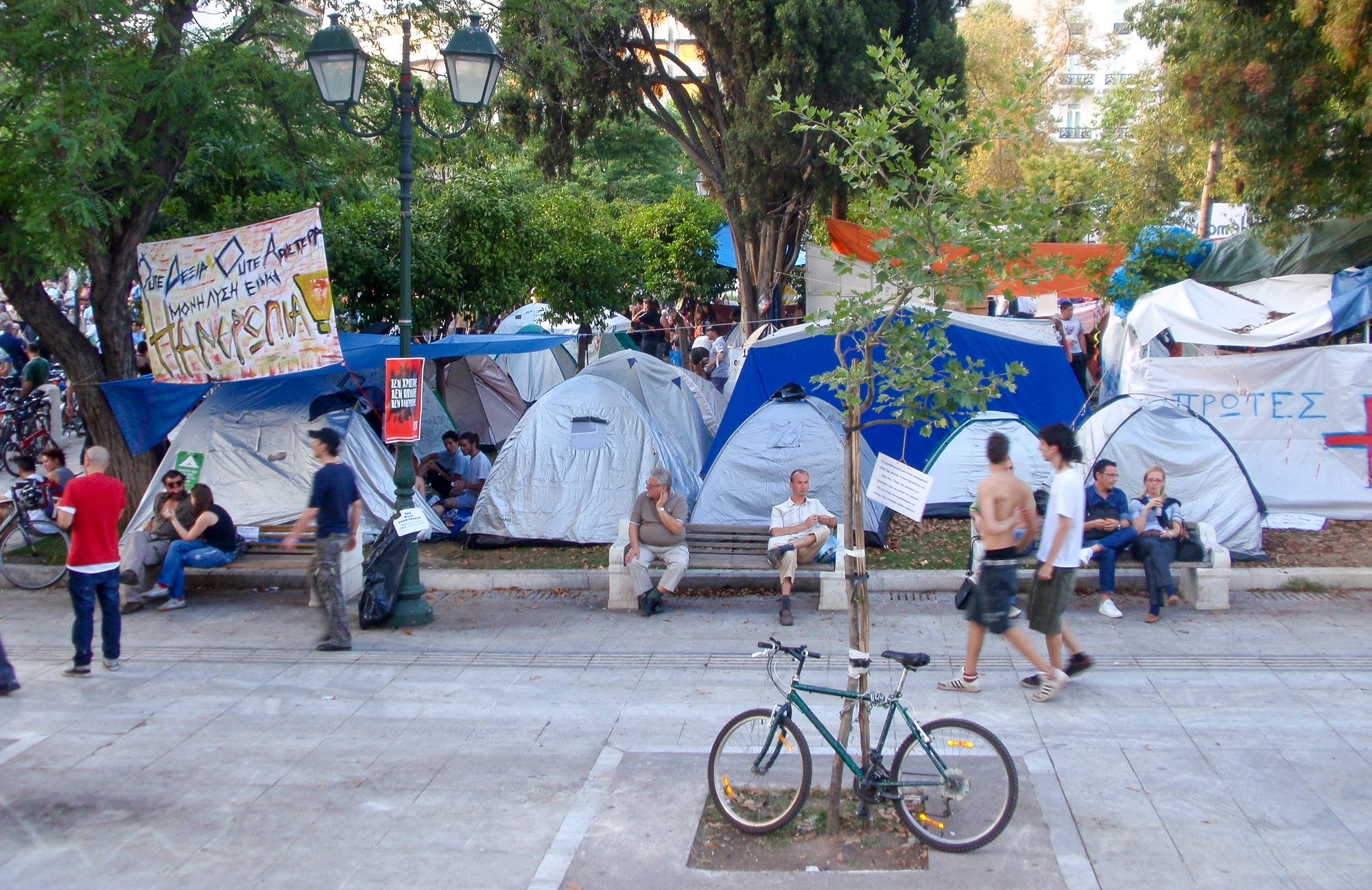
I’d moved to Athens a few weeks earlier, and everything was new to me. But this?
I asked the guy who was running the tent. He said:
There’s a lot of tension here at the occupation; a lot of anger. I wanted to help, and I know how to massage. So I put up this tent to ease the tensions. Then people started volunteering to give massages too, and here we are.
It wasn’t a gimmick; the tent had strategic value. No-one had told this guy to set it up, because there wasn’t anyone in charge.
Like the entire occupation, the massage tent was the result of a do-ocracy. A system where doing a task is in itself justification for you being the person who does that job.
Do-what?
A do-ocracy has its origins in hacker culture. It's a good decision-making system for informal activist campaigns.
In a do-ocracy, the team prioritises doing over organising. People choose their tasks and thus become responsible for delivering them.
Here's an example from the Burning Man festival in the US, from Hackerspace Gent:
30 people are going to Burning Man and camping together. Mary asks, “What if we organize a food pool so we can all cook and eat together?” Others answer, “Sure, I’d be a part of that,” or “I can make cake on Friday night.” Soon, Mary is calling campmates to borrow pots, pans and utensils, collating different people’s dietary restrictions, collecting money for food, and organising trips to the store to buy supplies. At camp, she posts work signup sheets for cooking and cleanup, answers questions, and fills in when others can’t (or don’t) do their shifts.
Burning Man itself is a large-scale manifestation of a do-ocracy. Open Source software is too.
A do-cracy says: those who do the work make the decisions.
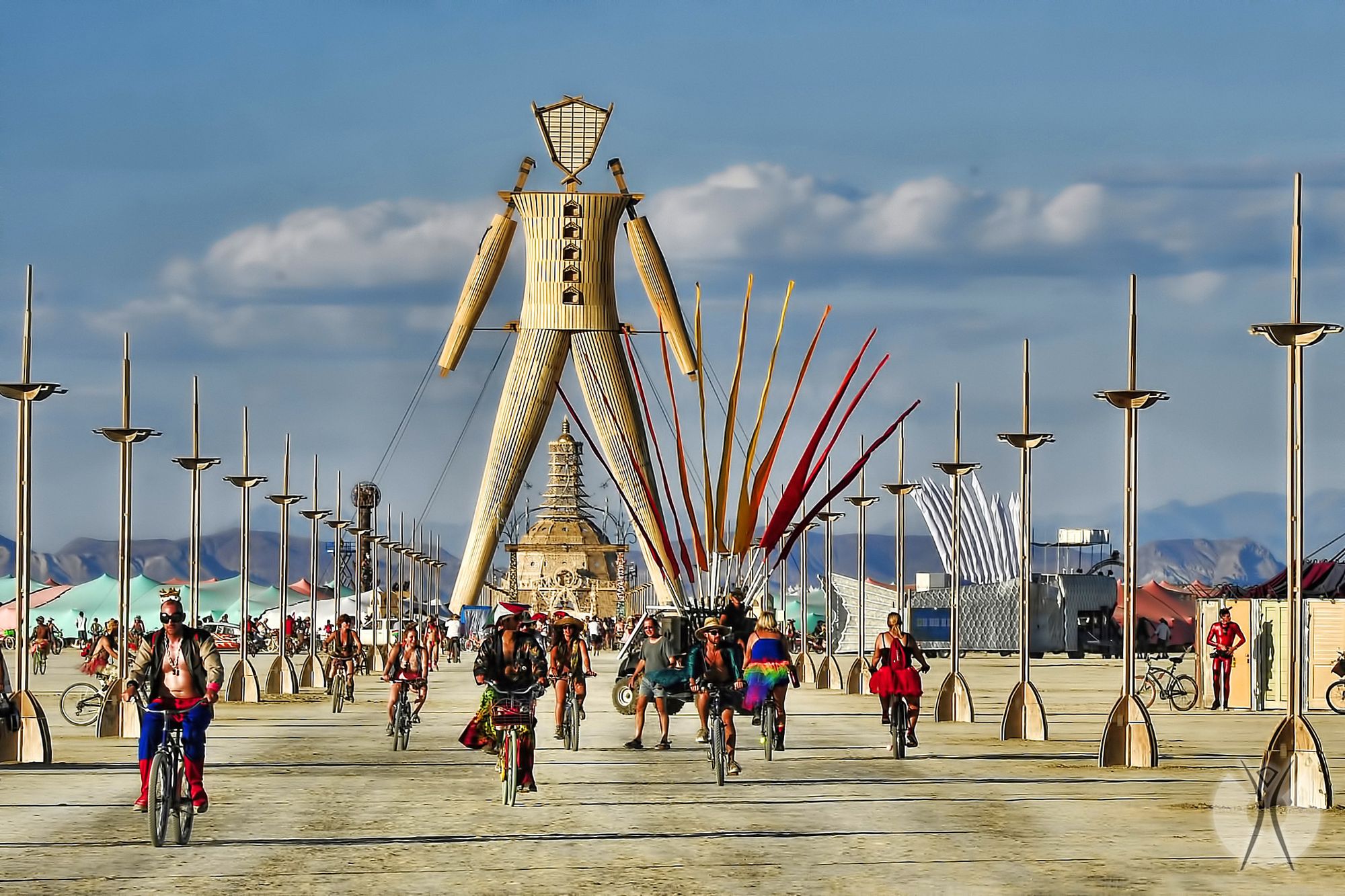
A flawed model
But the model has limits. A do-ocracy rewards people who are natural entrepreneurs, self-starters, extroverts. The sort who sets up a tent in a packed public square, makes a sign saying ‘free massages’, and gets to work kneading deltoids.
People who need more direction, or want to be told what to do, will feel lost in a do-ocracy. Or worse, they'll feel useless.
Another drawback: in a new volunteer campaign, people tend to resist doing menial tasks, even if they are important. A do-ocracy means these things won't get done. And in a do-cracy, nobody is looking at the whole picture — how the tasks fit together to deliver the campaigns’s Ultimate Goal.
So here’s a model for grassroots campaigns that I’ve found works. It mixes a vertical, hierarchical structure and a do-ocracy. Let's call it:
Coordinated do-ocracy!
In this hybrid model, people propose what they can do to the rest of the team. But instead of everyone then going off and doing the work, someone plays a coordination function.
The coordinator guides the campaign, keeping it moving towards its goal – with a light touch. They know what the campaign needs, because they are the guardian of the campaign plan.
People check with the coordinator to see if the tasks they’re offering are relevant to the plan. If a task needs doing and nobody is volunteering, the coordinator asks who could take it. They might also propose someone for the role. And they may help people to refine tasks, breaking them down and sharing them.
Example:
We need to be incorporated by Thursday, otherwise we can’t crowdfund for our campaign. This means that somebody has to contact a lawyer this week and get a quote. Arianna, do you think you can do it?
Or:
We need to print 300 flyers by Monday. Who could own this task?
The coordinator checks in with people ahead of each deadline to see if they can deliver. They manage the agenda of meetings and send a list of decisions taken. (Not ‘minutes’ and who said what. This isn’t the Commission.) And the coordinators sets an example and a rhythm, by “doing” too.
If the coordinated do-ocracy model sounds like a traditional top-down hierarchy to you, it shouldn’t. The coordinator has no power, no real leverage (these are volunteers!) over whether the team can get things done. The key word is ‘propose’.
But if the coordinator does their job right, it becomes obvious when someone has taken on more than they can do. And the coordinator can then put the task back out there for someone else to take it.
Without realising it, I've been using this model in every grassroots activist campaign I've coordinated, since those days of Syntagma Square.
Principles of the model
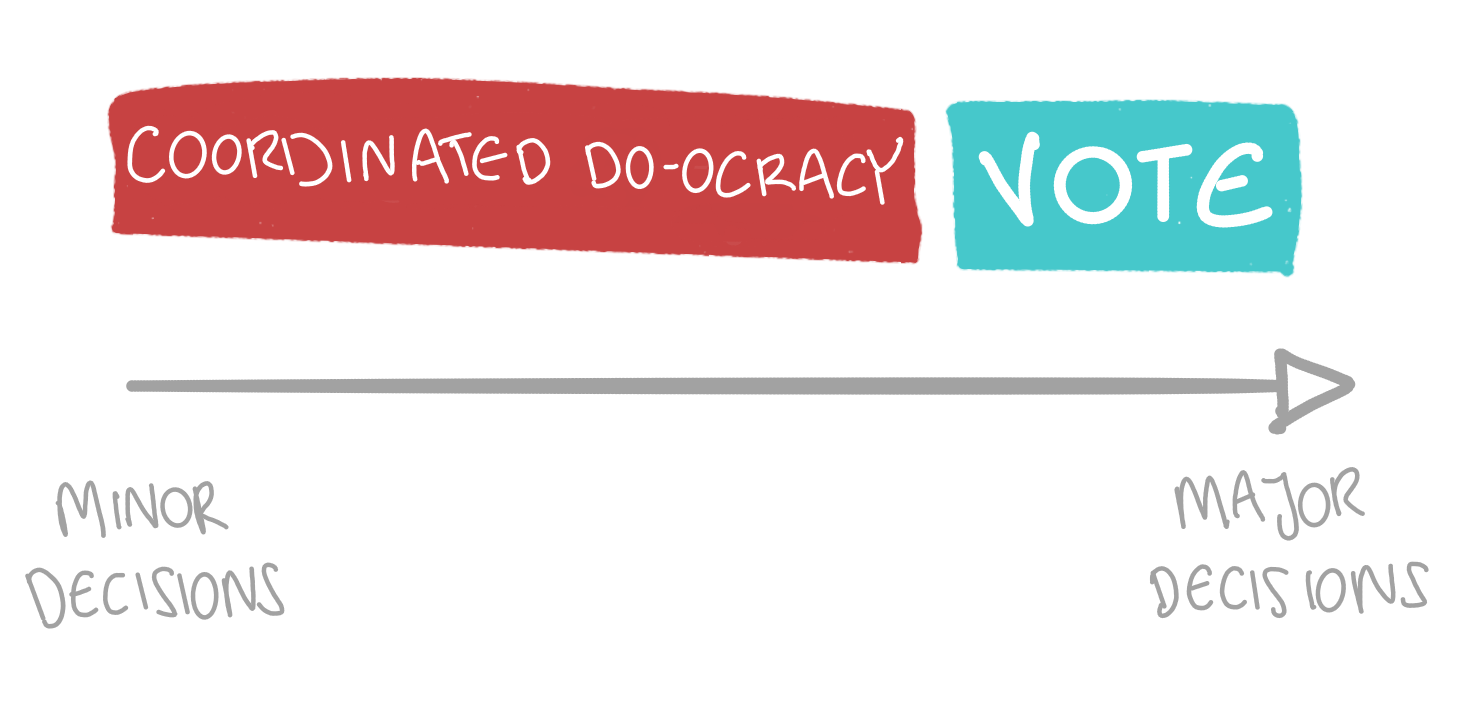
OK, a few more notes on coordinated do-ocracy.
It doesn’t work for major decisions, or those that are irreversible. In these cases:
- Make a proposal.
- Ask if anyone has any objections (instead ‘what do you think?’ or ‘do you agree?’). This makes ‘yes’ the default response, lowers the barrier to doing, and ensures that people speak up when it’s important to them. Watching everyone in Zoom call saying one-by-one that they agree is maddening…
- If anyone has an objection, they should make a counter-proposal.
- The team then decides between the counter-proposals, e.g. by voting.
Meetings are for taking decisions; brainstorms are something else. So label brainstorms explicitly. You don’t want people spending everyone's time in a meeting discussing what colour the clubhouse door should be.
Reward effort with recognition. Praise specifically. Criticise generally.
In a volunteer team, there’s always a transactional nature to people’s involvement. And in almost all cases, it’s fine. It is natural for people to seek some personal benefit in exchange for their time and energy. So if someone makes a video for you and wants to use it in their portfolio, let them. If the person that set up the massage tent wants to call himself one of the organisers of the Syntagma protest, go for it.
But then they are also accountable for doing what they said they would. To the team, not to the coordinator.
Make the decision-making system explicit. The idea of a ‘structureless’ group is BS. When things are explicit in a collaboration, all sides win.
And remember that a coordinated do-ocracy works best for activist projects that are starting out, or pop-up campaigns. If the project becomes long-term, and its members become more established (and better skilled), it will usually make sense to move to a fixed structure, where people have defined roles.
Like the shiatsu guy, the deep tissue girl, and so on.

